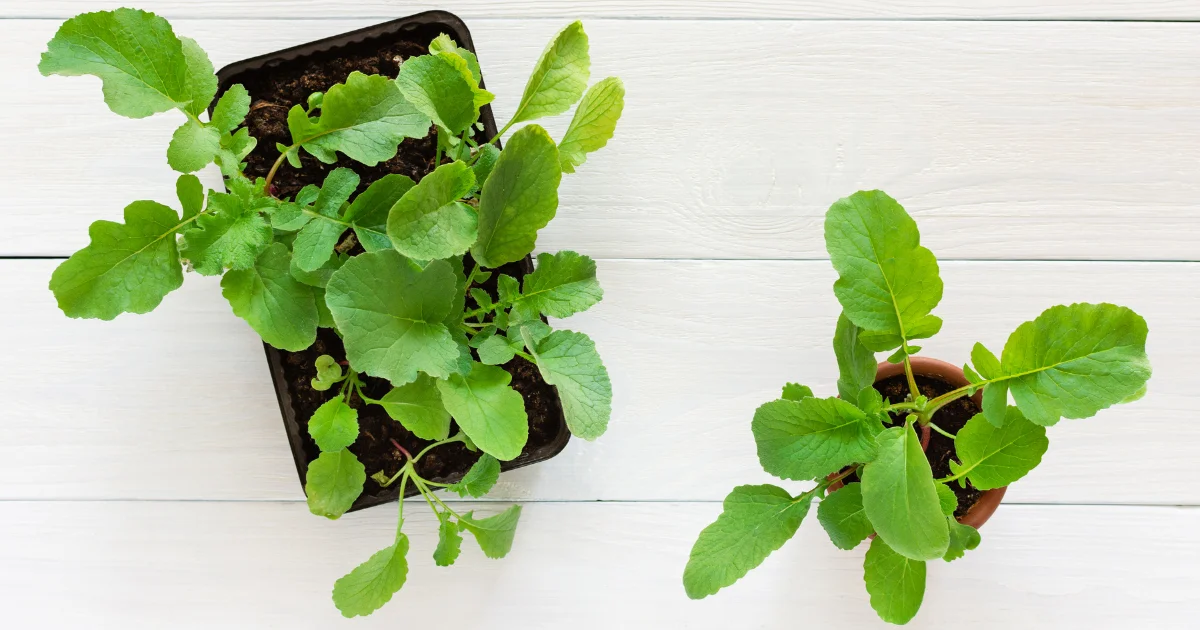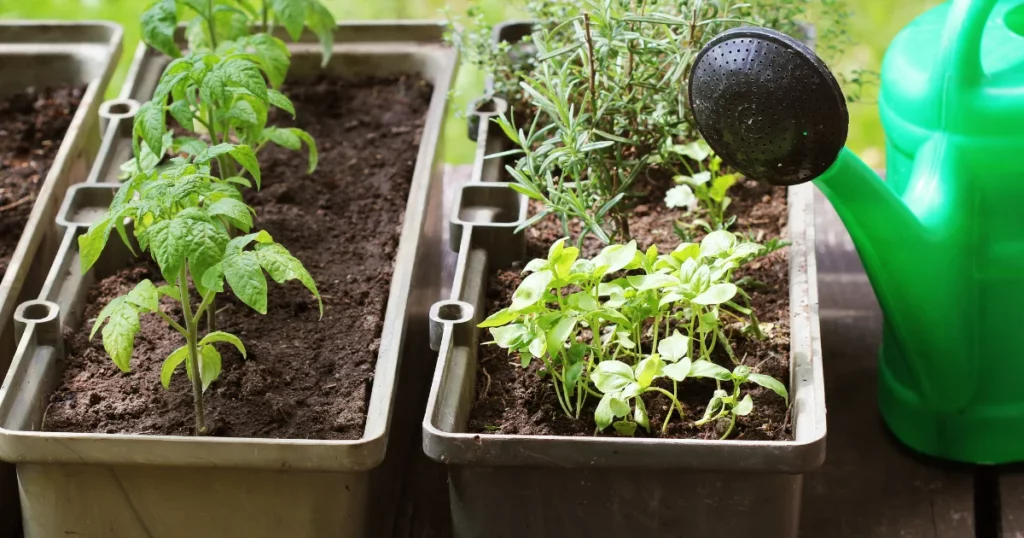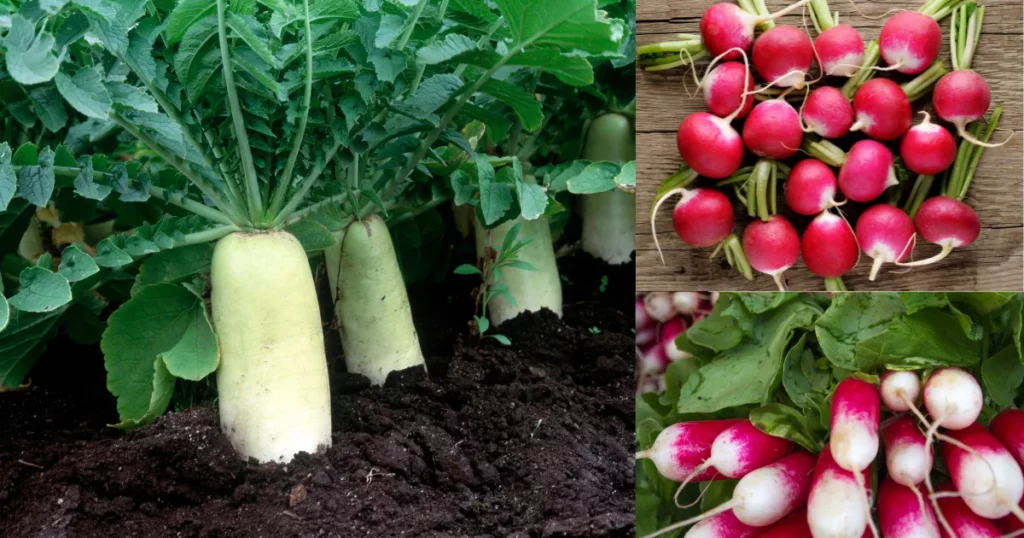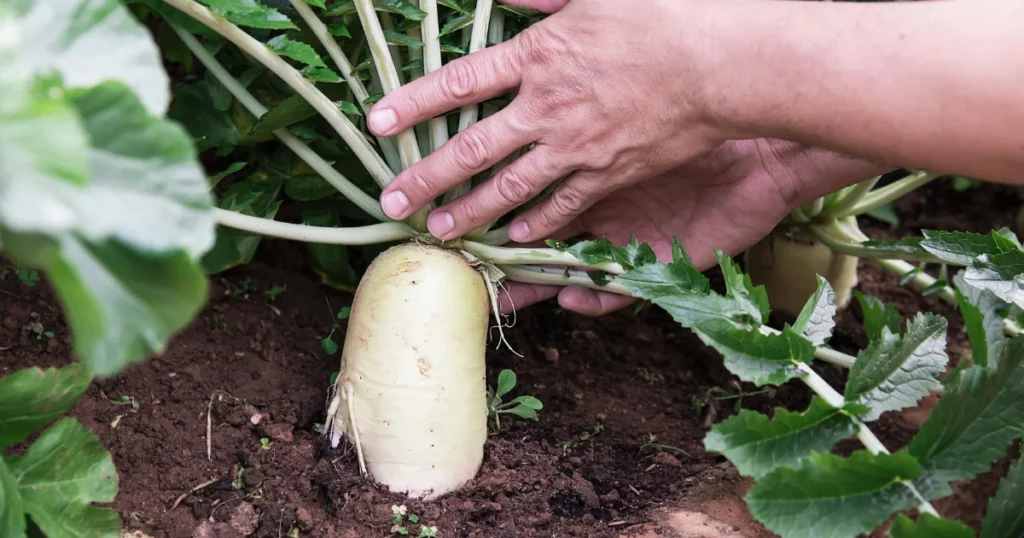Tips to Grow Radishes in Pots or Containers Indoors (From Seeds)

Let me take you on a delightful journey that began on my humble windowsill, where tiny seeds sprouted into vibrant radishes, defying the confines of indoor living. This wasn’t just about growing food; it was about discovering the joys of gardening within four walls.
For anyone who’s ever thought their apartment too small or their schedule too hectic for gardening, let my experience be your guide. I’ll share the simple yet gratifying process of nurturing radishes in pots or containers, perfect for beginners looking to add a touch of green and zest to their lives.
Tips to Grow Radishes in Pots or Containers Indoors:
1. Selecting the Right Pots or Containers

Choose a pot or container with a minimum depth of 6 inches to accommodate the root growth of most radish varieties. Larger varieties like Daikon require deeper containers, up to 2 feet.
Ensure the container has drainage holes to prevent waterlogging, which is detrimental to radishes. The container size and material (preferably plastic for indoor growing) also influence how many radishes you can plant and how well the soil retains moisture.
2. Optimal Growing Conditions
Radishes require 6-8 hours of direct sunlight daily. If your indoor setting lacks sufficient natural light, supplement with a grow light for 12-16 hours.
Maintain cool temperatures, ideally between 55-70℉, as high heat can stress the plants. In hot climates, provide some shade to protect the radishes from excessive heat.
3. Soil Preparation
Use a high-quality potting mix with a neutral pH of around 6.5-7, and enrich it with organic compost for nutrients. The soil should be loose to allow unobstructed root growth.
If the soil in your containers is compacted or heavy, consider adding horticultural sand or perlite to improve drainage and soil texture.
Related: Gardening Tools Names with Pictures
4. Choosing Radish Varieties

Select varieties that suit your taste and growing conditions. Options include French Breakfast, Cherry Belle, Easter Egg blend, and Miyashige White Daikon.
These varieties offer a range of flavors, sizes, and colors, and some can handle more heat, making them suitable for different indoor environments.
5. Planting Radishes
Directly sow radish seeds into the soil, about ½ inch deep. Space the seeds about 1-2 inches apart. Avoid disturbing the plants once they have sprouted, as radishes are root vegetables and sensitive to root disturbance.
The sowing process is straightforward, requiring a scattering of seeds followed by a light covering of soil.
6. Watering Requirements
Keep the soil consistently moist but not waterlogged. Water the radishes deeply to ensure the moisture reaches the roots, promoting strong growth.
Check the soil regularly for dryness, watering as needed without overdoing it. Avoid letting the soil dry out completely, as this can lead to cracked roots.
7. Fertilization
Radishes generally do not require additional fertilization if you use a quality potting mix and compost. However, if you decide to fertilize, choose a low-nitrogen, heavy-potassium organic fertilizer to encourage root development rather than leaf growth.
Avoid high-nitrogen fertilizers, which can detract from the growth of the edible root.
8. Pest and Disease Management
Keep an eye out for common pests like aphids and flea beetles, and diseases like downy mildew and damping off. Use natural remedies like soapy water for pests and fungicides for diseases.
Ensure good airflow and drainage to prevent fungal infections. Regular monitoring and preventive measures are key to maintaining healthy plants.
9. Harvesting

Harvest radishes when they reach your desired size, typically within 3-4 weeks for smaller varieties. Gently unearth a radish to check its size.
Avoid leaving them in the soil for too long, as they can become woody and less flavorful. Use them fresh or store them in the refrigerator for later use.
Following these steps will help you successfully grow radishes indoors in containers, providing a fresh and flavorful addition to your homegrown produce.
See Also: How to Plant Prickly Pear Cactus Seeds and Cuttings
Related FAQs
How do you get seeds from radishes?
Allow Radishes to Bolt: Radishes must first bolt (flower) to produce seeds. This typically happens in hot weather, usually in early to mid-summer.
Seed Pod Formation: After flowering, radish plants will form seed pods. These pods, initially green, will turn brown as they mature. You’ll know the seeds are ready when the pods are brown and completely dried out.
Harvesting the Seed Pods: Harvest the pods before they open naturally to avoid losing seeds. You can clip the seed pods from the plant or break them open while still attached. Place the harvested pods in a container like a bag, bucket, or bowl.
Extracting Seeds from Pods: After collecting the pods, break them apart gently to release the seeds. Separate the seeds from the pod and chaff (pod pieces and debris) by hand, and then blow gently to remove lighter debris.
Drying the Seeds: Spread the seeds on a flat surface in a cool, dry area. Allow them to air dry for at least a week. Ensure they are completely dry before storage to prevent mold.
Storing Seeds: Store the seeds in an airtight container in a cool, dry place. You can also refrigerate or freeze them for longer preservation. Radish seeds can remain viable for up to five years, but it’s advisable to harvest new seeds yearly for the freshest stock.
Note on Hybrid Varieties: If you collect seeds from hybrid radishes, the new plants may not be exact replicas of the parent due to cross-pollination. For more predictable results, use heirloom varieties.
Do radishes grow well in pots?
Radishes can indeed be successfully grown in pots. They are one of the fastest-growing vegetables and can be easily cultivated in containers, making them an excellent choice for small spaces like patios or balconies. This approach allows for a quick and minimal-effort harvest.
Do radishes like full sun or shade?
Radishes prefer full sun for optimal growth and development, as sunlight is crucial for their photosynthesis process. They thrive best when exposed to at least 6 hours of direct sunlight daily. While they can tolerate partial shade, insufficient sunlight may lead to fewer radishes and more leaf production.
How long do radishes take to grow?
Radishes typically reach harvest readiness quite rapidly, often within 3 weeks of planting. This quick maturation makes them an ideal vegetable for gardeners looking for a fast yield. It’s important to check their size and firmness around the three-week mark, as they are best harvested when about 1 inch in diameter.
What makes radishes grow faster?
To grow radishes faster:
1. Apply starter fertilizer (5-10-10) before planting.
2. Ensure at least 6 hours of sunlight daily.
3. Add compost to loamy, well-drained soil.
4. Plant seeds ½-1 inch deep, thin to 1-3 inches apart.
5. Grow in cool weather for best taste.
Citations:
1. Growth and Development of Radish (Raphanus sativus, L.) Under Selected Light Environments - JSTOR 2. Improvement of Germination and Early Growth of Radish through Modulation of Seed Metabolic Processes - NLM
